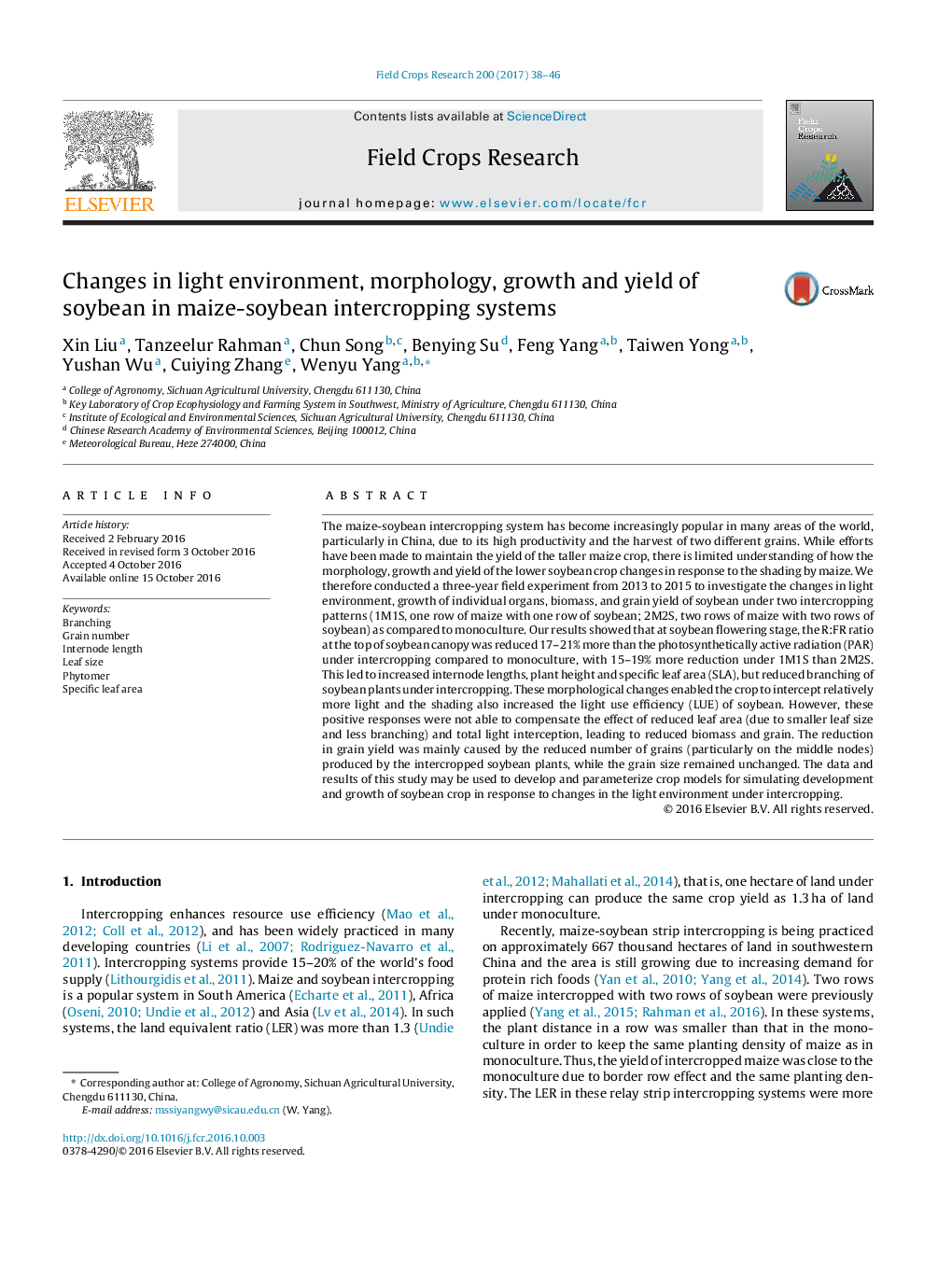| کد مقاله | کد نشریه | سال انتشار | مقاله انگلیسی | نسخه تمام متن |
|---|---|---|---|---|
| 4509804 | 1624663 | 2017 | 9 صفحه PDF | دانلود رایگان |
• Shading impact on soybean morphology in intercropping studied with 3-years data.
• Shading increased internode lengths, plant height, SLA, but reduced branching.
• Morphology change maximized light interception while shading increased LUE.
• Yield reduction in shade was due to less total light interception & grain number.
• Results may be used to develop and parameterize soybean models in intercropping.
The maize-soybean intercropping system has become increasingly popular in many areas of the world, particularly in China, due to its high productivity and the harvest of two different grains. While efforts have been made to maintain the yield of the taller maize crop, there is limited understanding of how the morphology, growth and yield of the lower soybean crop changes in response to the shading by maize. We therefore conducted a three-year field experiment from 2013 to 2015 to investigate the changes in light environment, growth of individual organs, biomass, and grain yield of soybean under two intercropping patterns (1M1S, one row of maize with one row of soybean; 2M2S, two rows of maize with two rows of soybean) as compared to monoculture. Our results showed that at soybean flowering stage, the R:FR ratio at the top of soybean canopy was reduced 17–21% more than the photosynthetically active radiation (PAR) under intercropping compared to monoculture, with 15–19% more reduction under 1M1S than 2M2S. This led to increased internode lengths, plant height and specific leaf area (SLA), but reduced branching of soybean plants under intercropping. These morphological changes enabled the crop to intercept relatively more light and the shading also increased the light use efficiency (LUE) of soybean. However, these positive responses were not able to compensate the effect of reduced leaf area (due to smaller leaf size and less branching) and total light interception, leading to reduced biomass and grain. The reduction in grain yield was mainly caused by the reduced number of grains (particularly on the middle nodes) produced by the intercropped soybean plants, while the grain size remained unchanged. The data and results of this study may be used to develop and parameterize crop models for simulating development and growth of soybean crop in response to changes in the light environment under intercropping.
Journal: Field Crops Research - Volume 200, January 2017, Pages 38–46
